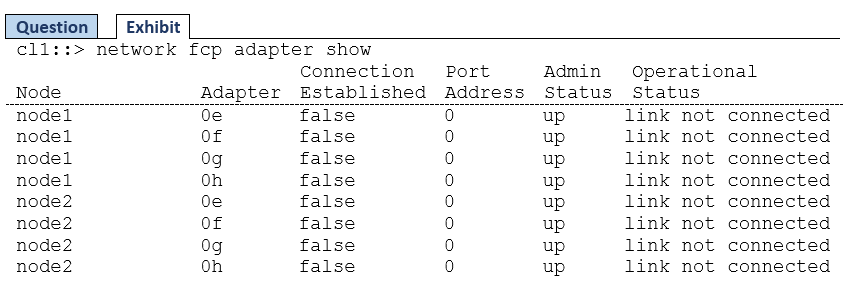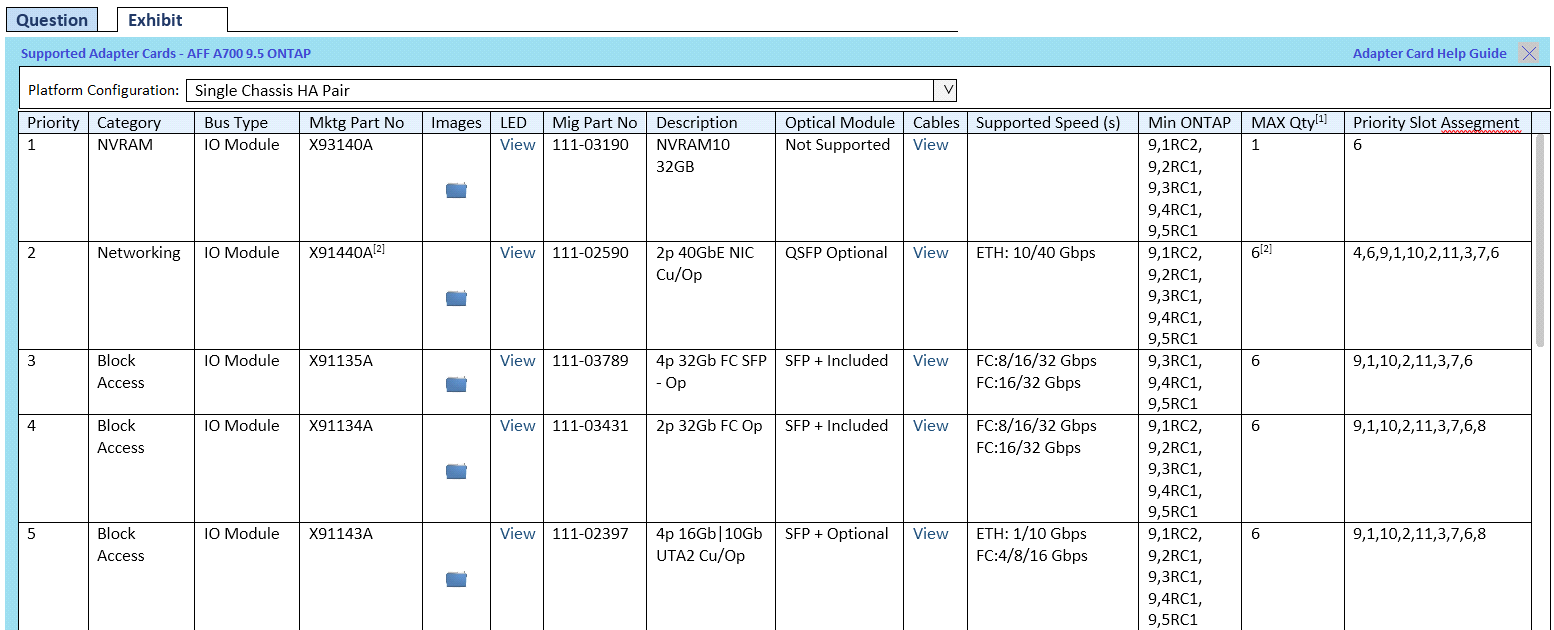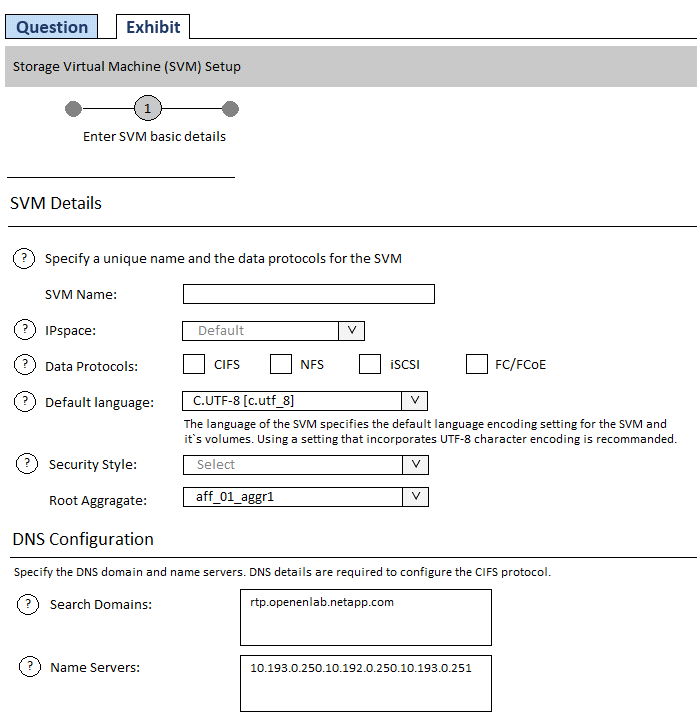Question 1

You have an existing 2-node AFF A300 cluster with premium bundle licensing applied. You need to
have consistently low front end latency, and have determined that NVMe satisfies this requirement.
Referring to the exhibit, which two actions would accomplish this task? (Choose two.)
- A. Add a UTA2 adapter to each of the two AFF A300 nodes.
- B. Add a 32 GB FC HBA to each of the two AFF A300 nodes.
- C. Apply the license for FCP.
- D. Apply the license for NVMe.
Answer:
B
Comments
Question 2
You have a thin-provisioned LUN that was created by using the lun create -vserver vs1 - path
/vol/vol1/lun1 -size 500G -ostype windows 2008 -space-reserve disabled -space-allocation disabled
command. You verify that your Windows 2016 host reports 200 GB free on lun1. However, lun1
shows 0 bytes free on the storage cluster.
What should you do to solve this problem?
- A. Change the LUN -space-allocation parameter to enabled.
- B. Change the LUN -ostype parameter to windows_gpt.
- C. Change the LUN -space-reserve parameter to enabled.
- D. Rescan the LUN disk in your Windows host so that it will notify NetApp about the free space.
Answer:
D
Comments
Question 3

Referring to the exhibit, what happens when you change the type for port 1a from target to initiator?
- A. The port type for 1a changes to initiator, and you must reboot the controller for the changes to take effect.
- B. You receive an error message that you must take ports 1a and 1b offline before you can change the type.
- C. B. You receive an error message that you must take the port 1a offline before you can change the type.
- D. The port type for 1a and 1b changes to initiator, and you must reboot the controller for the changes to take effect.
Answer:
A
Comments
Question 4
Which two features does Assymmetric Namespase Access (ANA) support? (Choose two.)
- A. multipathing
- B. LUN masking
- C. LUN hosting
- D. path management
Answer:
A,D
Comments
Question 5
A customer that is using an AFF A220 has a problem with a host for a new FC LUN. Other LUNs on the
same SVM are working properly. This LUN is not visible on the host.
Which configuration does the customer need to verify in their solution?
- A. LUN mapping with igroup
- B. host HBA speed settings
- C. FC target port setting on NetApp node
- D. FC switch zoning
Answer:
C
Comments
Question 6
A customer has an existing 8-node cluster that consists of six FAS2650 nodes and two FAS2554 nodes.
The customer wants to expand the cluster by adding two AFF A220 nodes.
Which resource would be used to determine whether this configuration is supported?
- A. Interoperability Matrix Tool (IMT)
- B. Config Advisor
- C. OneCollect
- D. Hardware Universe (HWU)
Answer:
B
Comments
Question 7
You deployed a new SVM for FC access, and you used the vserver fcr, create -vserver svm1 - status-
admin up command to enable FC service on the SVM. You then created the LIFs for the FC protocol.
When you review the status of the LIFs, they show that the admin status is up, but the operational
status is down. You have already verified that the ports are physically connected.
In this scenario, what is the next step to bring the LIFs up?
- A. Use the network interface modify command to change the operational status of the LIFs.
- B. Create at least one zone that contains your SVM LIF WWPNs and an initiator.
- C. Verify that an FC license is applied on your system.
- D. Disable the SAN switch port where your NetApp storage is connected.
Answer:
B
Comments
Question 8

A customer wants to add a 2-port, 32 Gb FC card to support NVMe in an AFF A700 2-node cluster.
Currently, there are cards in slots 1, 2, 4, 6, 8, and 9.
Referring to the exhibit, what is the number of the slot that should be used?
- A. 10
- B. 3
- C. 5
- D. 7
Answer:
C
Comments
Question 9

Referring to the exhibit, which two elements are required for NVMe host access with ONTAP 9.5 and
using supported AFF nodes? (Choose two.)
- A. You need 16 Gb FC HBAs installed in the AFF nodes.
- B. You must have the license installed for NVMe support in the cluster.
- C. You must have the license installed for FC support in the cluster.
- D. You need 32 Gb FC HBAs installed in the AFF nodes.
Answer:
C,D
Comments
Question 10
A customer is required to encrypt iSCSI traffic across their public network.
In this scenario, which method will accomplish this task?
- A. dot1q
- B. IPsec
- C. NVMe
- D. CHAP
Answer:
B
Comments
Page 1 out of 23
Viewing questions 1-10 out of 234
page 2